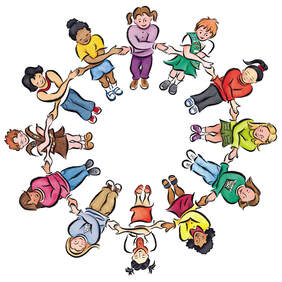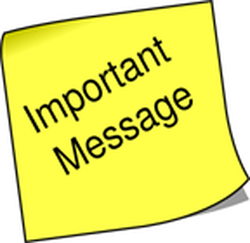 The most common complaints from authors I follow on Twitter are about marketing their work. They either say how hard marketing is, or they ask questions about whether it is necessary to market their work – before going on to ask how to go about marketing. Last year we posted a series of blogs about marketing for the Indie author and there are many other bloggers out there who have shared their knowledge, so there is no shortage of advice available. But to deal with the first issue first, yes, marketing is hard work. But it is essential work if you are an Indie author because no one is going to do it for you.  Small circles limit sales. Small circles limit sales. I’m not going to go back over the same ground again; if you want to know what I wrote about marketing you can find my blogs in the archive and if you want to know what other bloggers have said then just Google ‘blogs about how to market a book’. But I will offer some guidance here, just to whet your appetite and maybe prompt you to read a bit further. Let’s deal with the obvious, which is that the only people who are going to buy your book are the people who you tell about it. If you limit that to friends and family, then that is going to be your entire readership.  Marketing your book is about getting beyond friends and family to a wider audience and telling them about your book. On the optimistic side, your potential audience is global, but you have to find them because they won’t find you. I’ve said it many times in these blogs, but I’ll say it one more time. No one is going to stumble over your book by accident. Yes, it will show up in the search results on whatever book selling site you choose to use, but probably not on the first page of results, or even the second or third pages – and people looking for something to read very rarely get that far down the search results. So, what can you do about it?  The first thing is to find out how to market your books. If you don’t know what you are supposed to do, it becomes much harder to do it. And if you have heard that all you have to do is go on social media and make a few posts about it, then you have been misled. There is far more to it than that. OK, how do you learn? There is a very good website that offers free on-line courses, covering a wide range of subjects including social media marketing. Google “Futurelearn” and then search ‘social media marketing’ on their website. Most of the courses can be completed in a day if that’s the way you want to study them, but you can take as long as you want to finish them. Yes, it is time consuming to learn new skills, but floundering around in the dark and getting more stressed about why your books aren’t selling is far worse. It is better to light a candle than to curse the darkness (William L. Watkinson) – so light a candle of learning.  Like it or not - you need a plan. Like it or not - you need a plan. The next thing you need to do is to make a plan. Yes, boring, I know. But you can’t focus your efforts to get the best results if you haven’t got a plan. We’re not talking about constructing Gant charts and Pert charts here - you aren’t building a rocket ship. Pretty much the whole of your marketing plan can be written on one side of A4 paper – in big letters.  Rudyard Kipling - he had 6 good serving men. Rudyard Kipling - he had 6 good serving men. You may be familiar with the Rudyard Kipling quote “I keep six honest serving men (they taught me all I knew); Theirs names are What and Why and When and How and Where and Who.” Those 6 words form the basis of your plan. I’ll address them in the order they appear in the quote, for no other reason than that. So, ‘what’ do you want to say about your work? Having half a dozen, short clear messages to tell people about your work is essential.  Why half a dozen (it could be more)? Because people get bored reading the same Tweet or Facebook post time and time again. You need to keep your message fresh. And your message needs to sell the sizzle, not the sausage. What do I mean by that? Well, a sausage is a pretty mundane foodstuff, so you have to sell the ‘image’ of the sausage that gets people’s mouths watering: the golden-brown sausage sizzling in the pan, sending out appetising aromas. If you think that sounds like a hard thing to do, then I suspect you shouldn’t be a writer. Creating written images like that (and better) is your stock-in-trade.  ‘Why’ follows neatly from What. With so many books on the market (millions of them), why should a reader choose yours? You have to tell them why. You have to have a USP (unique selling point); something that your book does that no other book can or will do for them. We call this the ‘story’ and it has to sound attractive. It helps if you understand who your readers are and what they are looking for, because that will allow you to target them with the USP that will appeal to them. Because it will be a different USP for readers of romance, compared to readers of SFF, to use one contrasting example.  ‘When’ is a tricky one, but you have to know when your readers are going to be on social media. It will be at different times for different types of reader. If you are writing YA or children’s books, then school hours are out. If your audience is mainly elderly readers, then forget the evenings, because that’s when they watch TV – and they go to bed earlier. So this ‘when’ issue is something you really need to think about. Tweets start to lose their visibility to users just 5 minutes after they’ve been posted. Facebook posts start to lose their visibility after about 25 minutes – so timing is important if you want your messages to be seen. Did you know you can schedule posts on Facebook and Twitter, so they can be posted on whatever day and at whatever time you want, not just when you are on-line yourself? Other social media channels may allow you to do the same – so use that facility.  Every day is a school day! Every day is a school day! ‘How’ is the bit you really need to learn. There are good ways of promoting work and there are bad ways. If you think you already know the good ways, you can still learn the better and the best. Every day is a school day, as someone once said and if you already know everything – why are you reading this blog?  You have to search for your audience. You have to search for your audience. You may think ‘where’ is a simple matter – social media of course. Well, there is more than one type of social media, for a start and not all of it is good for all types of writing. As I said in a previous blog, if you write for children or YA, then there’s no point in being on Facebook and Twitter, because your readers are on Instagram and Tick Tok. Do some research to find out what sort of social media your readers are likely to use – then use it yourself. But also in the ‘where’ category are places other than social media. There is a whole raft of readers who get their book suggestions from sources other than social media, and it is beneficial for authors to use them. Local book shops, book fairs, public library events, even the village fete is a potential outlet for the entrepreneurial author. But if you don’t publish hard copy books, these will have a limited impact on the people who go to these things, because they will want to buy a copy at the time, not go back home and order on-line. Then there is local radio and your local newspapers – but you have to reach out to them, because they aren’t going to come looking for you. But they do have column inches or air time to fill, so they are usually receptive. And all this is before you consider paying to advertise, which is an option that is open to even the smallest purse.  The last friend amongst the 6 is ‘who’. We’ve already touched on this to an extent. Who will buy your book? Not everyone who reads books will read the sort of books you write. I don’t read westerns, for example. There’s nothing wrong with westerns, they just don’t appeal to me, in the same way that paragliding doesn’t appeal to me. You have to know who your readers are so that you can focus your efforts on reaching them and not wasting time (and often money) sending out blasts of promotional material to people who will never buy your books. Some of them may never buy any books at all, let alone yours (we call these people “weirdos”). I know all of the above sounds daunting but, as Lao Tzu said a very long time ago, a journey of a thousand miles starts with a single step. And the best single step you can every hope to take is to go back to school and learn how to do your social media marketing better. Good luck with your marketing plan and please feel free to share your success stories in the comments section below. If you have enjoyed this blog or found it informative, why not sign up for our newsletter so you can be kept informed about future blogs. And you can get one of our books for FREE just for signing up. Click the button below to find out more.
0 Comments
Leave a Reply. |
AuthorThis blog is compiled and curated by the Selfishgenie publishing team. Archives
March 2025
|
 RSS Feed
RSS Feed